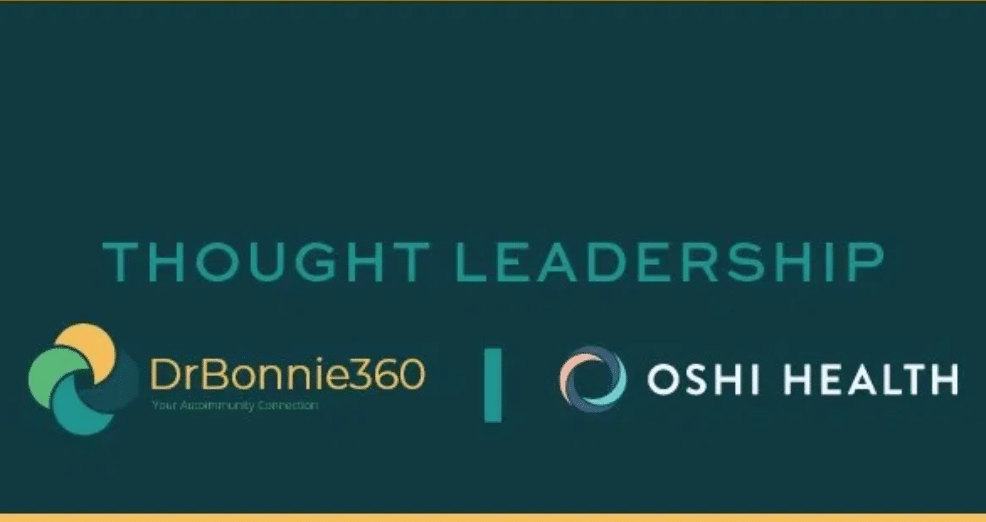Dr. Bonnie 360 – Digital GI Health (Part 2 of 2)

Excerpt of a conversation with Oshi Health CEO Sam Holliday and Dr. Bonnie on post-COVID telehealth, digital healthcare, virtual-first primary and specialty care, and building the future of GI care.
GI as initial complaint and the PCP to GI handoff
Sam: GI is an interesting specialty. As I said before, many patient journeys start with GI symptoms in primary care. Estimates vary, but up to 20% of primary care visits include a GI symptom among the complaints. PCPs can rule out more common things and do some testing. For example, they can diagnose GERD and prescribe a PPI (proton pump inhibitor, e.g, famotidine). But if the problem persists or it’s not any of the obvious disorders, PCP’s refer patients to GI clinics. But here’s the rub. Average wait times to see a gastroenterologist are long. So, patients continue to suffer while they wait weeks or months to be seen.

The long GI diagnosis-to-treatment journey
Sam: Once the patient gets to the GI appointment, a more intense diagnostic process begins. There’s a set of well-recognized differential diagnostic pathways that gastroenterologists use. These are to figure out which combination of factors are triggering symptoms. This takes time and detective work because these are not as simple as, for comparison, diabetes. To diagnose diabetes, you take blood, measure glucose and A1C levels and get a number that says diabetes. Unfortunately, GI conditions are often murky. Many symptoms (e.g., bloating, diarrhea, pain) are common to several diseases, and thus harder to diagnose.

Once diagnosed, treatments that work for each patient differ, it may require trial and error to find the right one. There aren’t simple biomarkers (like glucose levels in diabetes) to measure response to treatments. It takes a deeper exploration of potential triggers of symptoms, tracking of bowel movements, pain levels, bloating, constipation, etc. The care team and patient must experiment until they find the right approach. This means a mix of medication, dietary changes, lifestyle adjustments and reduction in stress, maybe mental health treatment. This is an area where digital GI health care can help.
The challenges of GI case management
Sam: So, managing diabetes is pretty clear: insulin, other medications. Although there IS a dietary management/weight loss angle to type 2 diabetes that overlaps with chronic GI management. In general, though, GI conditions are more complex and nuanced to manage. Understanding symptoms, such as bowel patterns, means confronting stigmatized topics that people are uncomfortable talking about. Patterns of pain, constipation, bloating, are symptoms that could tell us whether treatment and case management are working or not. We do not yet have simple quantitative measures of results.
Remote monitoring, diet & psychology interventions, care teams
One of the gaps we see is the lack of a great care model for ongoing symptom tracking. Such remote monitoring of GI symptoms can show if treatments are working. On the other hand, they can show if the patient is headed toward an escalation. To make it more complex, there are many things that can trigger GI symptoms. These include diet, mental health factors like stress, anxiety and depression, genetics, structural issues, inflammation and more. Managing all this takes time and an ongoing relationship. Even better, that relationship would be with an integrated GI-specialized care team. That would include doctors, dietitians and behavioral health therapists all working on the same care plan. Many of these steps are perfect for telehealth and thus natural for digital GI health care.
Sam Holliday
Earlier you mentioned Dr. K at SonarMD. A big part of what they do in IBD is remote monitoring to detect problems before they escalate. We’re building that piece in as well at Oshi Health. Digital GI health is going to include many of these pieces.
Triggering foods and dietary management – where digital GI health can excel
Another big gap is diet and behavioral psychology interventions, which are well studied and shown to be effective. If we can figure out if certain foods are triggering symptoms, then reorienting patients’ diets to minimize those foods can improve symptoms. For example, take low-FODMAP diets. There’s a lot of evidence that they work, but they are hard to execute on your own. Right now, practices give you a printout about low-FODMAP foods. But you, the patient, have to do your own research, eliminate foods and then reintroduce them in a structured way. All the while tracking symptoms and trying to connect the dots. Doing that on your own is overwhelming, especially if you are already feeling miserable. Taking a digital GI health approach, with a coach and tools for tracking, can make this more user-friendly.
You’d think that when you go to the gastroenterology clinic, they would pair you up with their dietician and get to work on your diet. But they don’t. Most clinics don’t have a GI-specialized dietician on staff. Maybe they give you a few phone numbers and you, the patient, have to coordinate. First try to find dietitians, then figure out if they are covered by your insurance. Maybe they do telehealth, maybe they don’t. That’s not a system designed to solve your GI problem, especially the dietary piece.
Read the full interview here.


